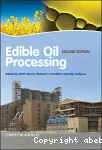Adresse
Infodoc : Réseau des bibliothèques et centres de documentation d'AgroParisTechFrance
contact

Catégories
|
Thésaurus Agro-alimentaire , PHYSIQUE , PARAMETRE PHYSIQUE , DENSITE
DENSITESynonyme(s)POIDS SPECIFIQUE |
Documents disponibles dans cette catégorie (18)
 Ajouter le résultat dans votre panier Faire une suggestion Affiner la recherche Interroger des sources externes
Ajouter le résultat dans votre panier Faire une suggestion Affiner la recherche Interroger des sources externes
 Livre
Livre
 Livre
Livre978-1-4443-3684-91 vol. (XIX-322 p.)
1 vol. (XIX-322 p.)ISBN : 978-1-4443-3684-9 
 Livre115,15
Livre115,15978-0-306-47806-2372 p.
372 p.Prix : 115,15 ISBN : 978-0-306-47806-2 
 Livre
Livre978-0-87819-509-1552 p.
552 p.ISBN : 978-0-87819-509-1 
 Livre751
Livre751978-0-12-384430-9919 p.
919 p.Prix : 751 ISBN : 978-0-12-384430-9 
 Livre1350
Livre1350978-2-85206-999-21 vol. (XVIII-1474 p.)
1 vol. (XVIII-1474 p.)Prix : 1350 ISBN : 978-2-85206-999-2 
 Livre
Livre978-0-12-398530-91 vol. (XXIII-867-[8] p.)
1 vol. (XXIII-867-[8] p.)ISBN : 978-0-12-398530-9 
 Livre
Livre978-1-4398-0918-11 vol. (XXIII-697 p.)
1 vol. (XXIII-697 p.)ISBN : 978-1-4398-0918-1 
 Livre650,7
Livre650,7978-2-12-197621-1256 p.
256 p.Prix : 650,7 ISBN : 978-2-12-197621-1 
 Thèse17 p. - 133 p.
Thèse17 p. - 133 p.
17 p. - 133 p.
 Livre
Livre
 Livre59,61
Livre59,61978-0-387-30780-X257 p.
257 p.Prix : 59,61 ISBN : 978-0-387-30780-X 
 Livre
Livre978-3-527-26218-2465 p.
465 p.ISBN : 978-3-527-26218-2 
 Livre500
Livre500978-2-86883-052-4845 p.
845 p.Prix : 500 ISBN : 978-2-86883-052-4 
 Livre
Livre978-0-8169-9875-31 vol. (XIII-762 p.)
1 vol. (XIII-762 p.)ISBN : 978-0-8169-9875-3 
 Livre39 EUR
Livre39 EUR978-2-7430-0510-81 vol. (XIV-199 p.)
1 vol. (XIV-199 p.)Prix : 39 EUR ISBN : 978-2-7430-0510-8 
 Livre50,35
Livre50,35978-80-902671-7-692 p.
92 p.Prix : 50,35 ISBN : 978-80-902671-7-6






